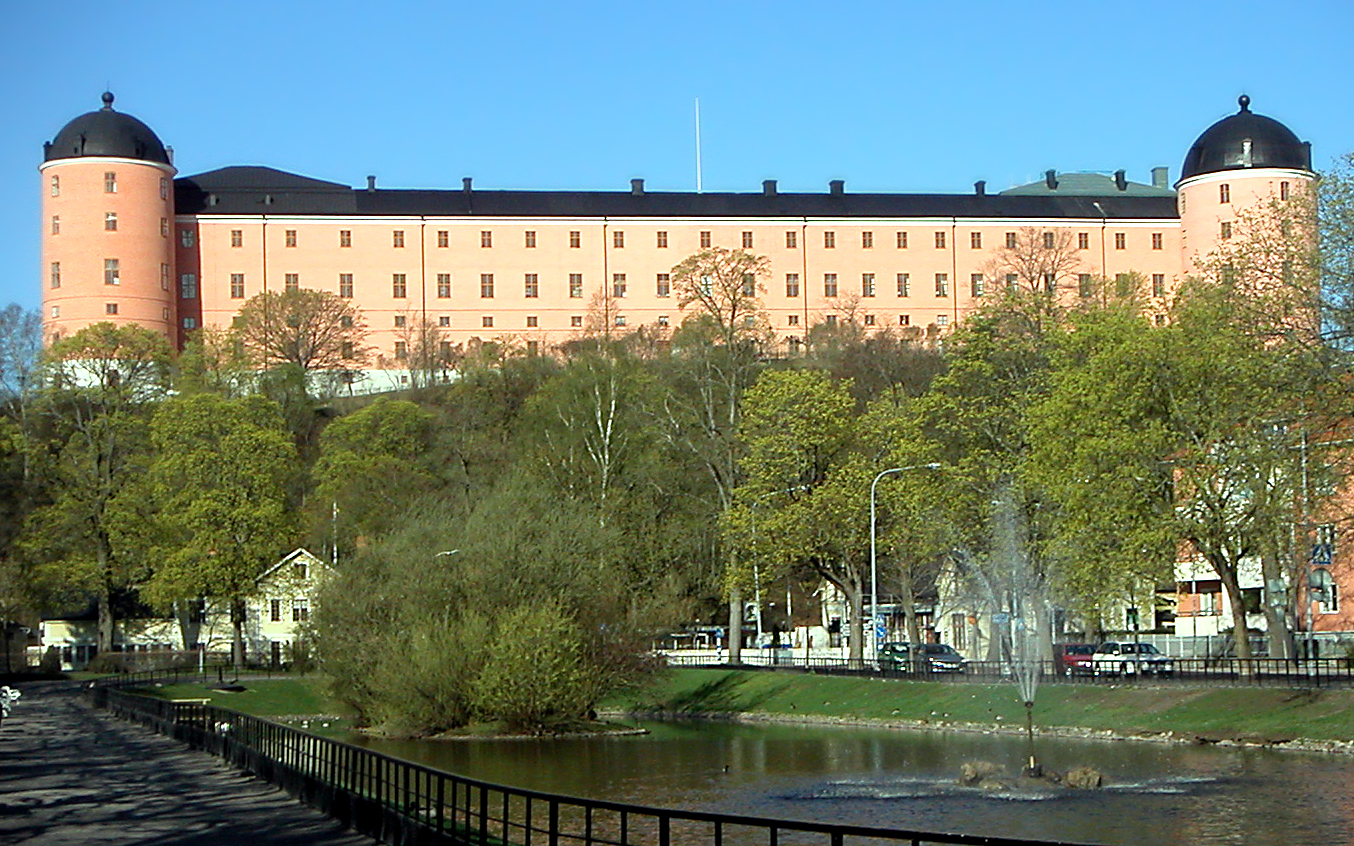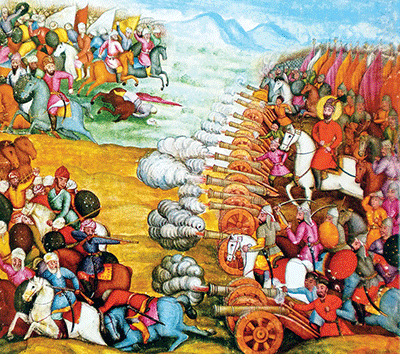|
Pehr Löfling
Pehr Löfling (31 January 1729 – 22 February 1756) was a Swedish botanist and an apostle of Carl Linnaeus. Biography Löfling was born in Tolvfors Bruk, Gävle, Sweden. He studied at the University of Uppsala where he attended courses taught by Carl Linnaeus. When the Spanish ambassador asked Linnaeus to select a botanist for service in the American colonies, the professor at once named Loefling. He went to Spain in 1751 to learn Spanish, and then embarked with other scientists for South America in February 1754. The Treaty of Madrid (13 January 1750) had fixed the colonial borders of Spain and Portugal. In Cumaná, Venezuela (then a Spanish colony) Löfling joined a project to demarcate the border with Brazil, the ''Expedicion de Limites al Orinoco''. He was put in charge of a natural history department evaluating the resources of the region. Assisted by two young Spanish doctors, he was involved in the expedition for the remainder of his life. He died in a remote mission ... [...More Info...] [...Related Items...] OR: [Wikipedia] [Google] [Baidu] |
Gästrikland
Gästrikland () is a historical province or ''landskap'' on the eastern coast of Sweden. It borders Uppland, Västmanland, Dalarna, Hälsingland and the Gulf of Bothnia. Gästrikland is the southernmost and the most densely populated of the Norrland provinces. The Latin name of the province is ''Gestricia''. Before 1900, the spelling ''Gestrikland'' was also used in Swedish. Administration The traditional provinces of Sweden serve no administrative or political purposes, but are historical and cultural entities. In the case of Gästrikland the province constitutes the southern part of the administrative county, ''län'', Gävleborg County. Heraldry Arms granted in 1560. As with other provinces the arms is represented with a ducal coronet. Blazon: "Argent Hurty an Elk statant Gules attired and hoofed Or." A coat of arms for Gävleborg County was granted in 1938, combining the arms of Gästrikland and Hälsingland. Geography Gästrikland is often called ''the gate to ... [...More Info...] [...Related Items...] OR: [Wikipedia] [Google] [Baidu] |
Loeflingia
Loeflingia is a genus of plant in the family Caryophyllaceae occurring in North America, Europe, northern Africa, and southwestern Asia. Plants of the genus bear bristle-like stipules, as well as axillary, sessile flowers with awned sepals and no or vestigial petals. The fruit is a three-valved capsule. Species Species include the following: * '' Loeflingia baetica'' Lag. * '' Loeflingia hispanica'' L. * '' Loeflingia squarrosa'' Nutt. * '' Loeflingia tavaresiana'' Samp. External linksLoeflingiaat The Plant List The Plant List was a list of botanical names of species of plants created by the Royal Botanic Gardens, Kew and the Missouri Botanical Garden and launched in 2010. It was intended to be a comprehensive record of all known names of plant specie ...Loeflingiaat Calflora.org {{Taxonbar, from=Q944120 Caryophyllaceae genera Caryophyllaceae ... [...More Info...] [...Related Items...] OR: [Wikipedia] [Google] [Baidu] |
Uppsala University Alumni
Uppsala ( ; ; archaically spelled ''Upsala'') is the capital of Uppsala County and the fourth-largest city in Sweden, after Stockholm, Gothenburg, and Malmö. It had 177,074 inhabitants in 2019. Located north of the capital Stockholm, it is also the seat of Uppsala Municipality. Since 1164, Uppsala has been the ecclesiastical centre of Sweden, being the seat of the Archbishop of the Church of Sweden. Uppsala is home to Scandinavia's largest cathedral – Uppsala Cathedral, which was the frequent site of the coronation of the Swedish monarch until the late 19th century. Uppsala Castle, built by King Gustav Vasa, served as one of the royal residences of the Swedish monarchs, and was expanded several times over its history, making Uppsala the secondary capital of Sweden during its greatest extent. Today, it serves as the residence of the Governor of Uppsala County. Founded in 1477, Uppsala University is the oldest centre of higher education in Scandinavia. Among the many ... [...More Info...] [...Related Items...] OR: [Wikipedia] [Google] [Baidu] |
1756 Deaths
Events January–March * January 16 – The Treaty of Westminster is signed between Great Britain and Prussia, guaranteeing the neutrality of the Electorate of Hanover, controlled by King George II of Great Britain. * January 27 – Wolfgang Amadeus Mozart is born in Salzburg, Austria, to Anna Maria and Leopold Mozart. * February 7 – Guaraní War: The leader of the Guaraní rebels, Sepé Tiaraju, is killed in a skirmish with Spanish and Portuguese troops. * February 10 – The massacre of the Guaraní rebels in the Jesuit reduction of Caaibaté takes place in Brazil after their leader, Noicola Neenguiru, defies an ultimatum to surrender by 2:00 in the afternoon. On February 7, Neenguiru's predecessor Sepé Tiaraju has been killed in a brief skirmish. As two o'clock arrives, a combined force of Spanish and Portuguese troops makes an assault on the first of the Seven Towns established as Jesuit missions. Defending their town with cannons made out of bamboo, the ... [...More Info...] [...Related Items...] OR: [Wikipedia] [Google] [Baidu] |
1729 Births
Events January–March * January 8 – Frederick, the eldest son of King George II of Great Britain is made Prince of Wales at the age of 21, a few months after he comes to Britain for the first time after growing up in Hanover. For 23 years, Frederick is heir apparent to the British throne, but dies of a lung injury in 1751. * January 19 – At the age of 14, Joseph (José), Prince of Brazil, son of King John V of Portugal, is married to the 10-year-old Princess Mariana Victoria of Spain, eldest daughter of King Philip V of Spain. In 1750, the couple become King Joseph I and Queen Consort Mariana Victoria of Spain. * February 14 – King Philip V of Spain issues a royal '' cedula'', directing an effort to offer incentives to families from the Canary Islands for settlements in New Spain north of the Rio Grande in the modern-day U.S. state of Texas (→ Canarian Americans). * February 24 (February 13 O.S.) – In the city of Resht in Persia, Russia ... [...More Info...] [...Related Items...] OR: [Wikipedia] [Google] [Baidu] |
Swedish Taxonomists
Swedish or ' may refer to: Anything from or related to Sweden, a country in Northern Europe. Or, specifically: * Swedish language, a North Germanic language spoken primarily in Sweden and Finland ** Swedish alphabet, the official alphabet used by the Swedish language * Swedish people or Swedes, persons with a Swedish ancestral or ethnic identity ** A national or citizen of Sweden, see demographics of Sweden ** Culture of Sweden * Swedish cuisine See also * * Swedish Church (other) * Swedish Institute (other) * Swedish invasion (other) * Swedish Open (other) Swedish Open is a tennis tournament. Swedish Open may also refer to: * Swedish Open (badminton) * Swedish Open (table tennis) * Swedish Open (squash) * Swedish Open (darts) {{disambiguation ... {{disambig Language and nationality disambiguation pages ... [...More Info...] [...Related Items...] OR: [Wikipedia] [Google] [Baidu] |
18th-century Swedish Botanists
The 18th century lasted from 1 January 1701 (represented by the Roman numerals MDCCI) to 31 December 1800 (MDCCC). During the 18th century, elements of Enlightenment thinking culminated in the Atlantic Revolutions. Revolutions began to challenge the legitimacy of monarchical and aristocratic power structures. The Industrial Revolution began mid-century, leading to radical changes in human society and the environment. The European colonization of the Americas and other parts of the world intensified and associated mass migrations of people grew in size as part of the Age of Sail. During the century, slave trading expanded across the shores of the Atlantic Ocean, while declining in Russia and China. Western historians have occasionally defined the 18th century otherwise for the purposes of their work. For example, the "short" 18th century may be defined as 1715–1789, denoting the period of time between the death of Louis XIV of France and the start of the French Revolution ... [...More Info...] [...Related Items...] OR: [Wikipedia] [Google] [Baidu] |
Loefling Zoo
The Loefling Zoo () Also Zoological Park Loefling Is a publicly owned zoological garden located southwest of Cachamay Park, in Ciudad Guayana, part of the Bolivar State in the Venezuelan Guayana region. It received its name in honor of the Swedish botanist Pehr Löfling. He was one of the first to make the fauna and flora of this region known to science, and he died near Ciudad Guayana. Its administration and management are a responsibility of the Venezuelan Guiana Corporation (CVG, Corporación Venezolana de Guayana) under the supervision of the National Foundation of Zoological Parks and Aquariums of Venezuela. (ZOO-AC-V015) Among the species that can be seen in this park are: the Orinoco caiman, monkeys, deer, barnacles, ''chiguires'' (capybara), babas, baculi, reptiles, ''morrocoyes'' (tortoises) and many other species that inhabit there, some in controlled captivity and others in shape natural. Also, you can admire beautiful trees like mahogany, samanes, araguaneyes, apa ... [...More Info...] [...Related Items...] OR: [Wikipedia] [Google] [Baidu] |
Lythraceae
Lythraceae is a family (biology), family of flowering plants, including 32 genus, genera, with about 620 species of Herbaceous plant, herbs, shrubs, and trees. The larger genera include ''Cuphea'' (275 spp.), ''Lagerstroemia'' (56), ''Nesaea (plant), Nesaea'' (50), ''Rotala (plant), Rotala'' (45), and ''Lythrum'' (35). It also includes the members of the former families of the pomegranate (''Punica granatum'', formerly in Punicaceae) and of the water caltrop (''Trapa natans'', formerly in Trapaceae). Lythraceae has a worldwide distribution, with most species in the tropics, but ranging into temperate climate regions as well. The family is named after the type genus, ''Lythrum'', the loosestrifes (e.g. ''Lythrum salicaria'' purple loosestrife) and also includes henna (''Lawsonia inermis''). It now includes the pomegranate, formerly classed in a separate family Punicaceae. The family also includes the widely cultivated Lagerstroemia, crape myrtle trees. Botanically, the leaves are ... [...More Info...] [...Related Items...] OR: [Wikipedia] [Google] [Baidu] |
Plant
Plants are the eukaryotes that form the Kingdom (biology), kingdom Plantae; they are predominantly Photosynthesis, photosynthetic. This means that they obtain their energy from sunlight, using chloroplasts derived from endosymbiosis with cyanobacteria to produce sugars from carbon dioxide and water, using the green pigment chlorophyll. Exceptions are parasitic plants that have lost the genes for chlorophyll and photosynthesis, and obtain their energy from other plants or fungi. Most plants are multicellular organism, multicellular, except for some green algae. Historically, as in Aristotle's biology, the plant kingdom encompassed all living things that were not animals, and included algae and fungi. Definitions have narrowed since then; current definitions exclude fungi and some of the algae. By the definition used in this article, plants form the clade Viridiplantae (green plants), which consists of the green algae and the embryophytes or land plants (hornworts, liverworts ... [...More Info...] [...Related Items...] OR: [Wikipedia] [Google] [Baidu] |
Monotypic
In biology, a monotypic taxon is a taxonomic group (taxon) that contains only one immediately subordinate taxon. A monotypic species is one that does not include subspecies or smaller, infraspecific taxa. In the case of genera, the term "unispecific" or "monospecific" is sometimes preferred. In botanical nomenclature, a monotypic genus is a genus in the special case where a genus and a single species are simultaneously described. Theoretical implications Monotypic taxa present several important theoretical challenges in biological classification. One key issue is known as "Gregg's Paradox": if a single species is the only member of multiple hierarchical levels (for example, being the only species in its genus, which is the only genus in its family), then each level needs a distinct definition to maintain logical structure. Otherwise, the different taxonomic ranks become effectively identical, which creates problems for organizing biological diversity in a hierarchical syste ... [...More Info...] [...Related Items...] OR: [Wikipedia] [Google] [Baidu] |


